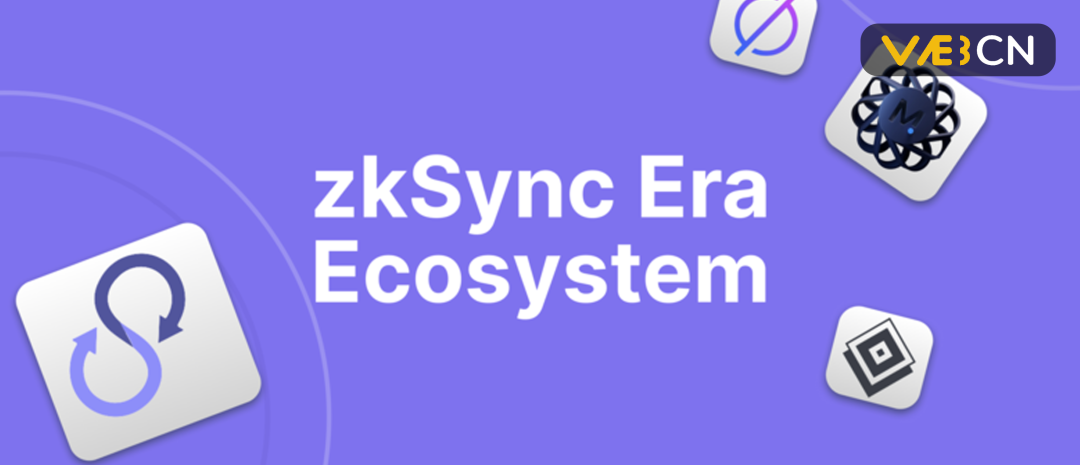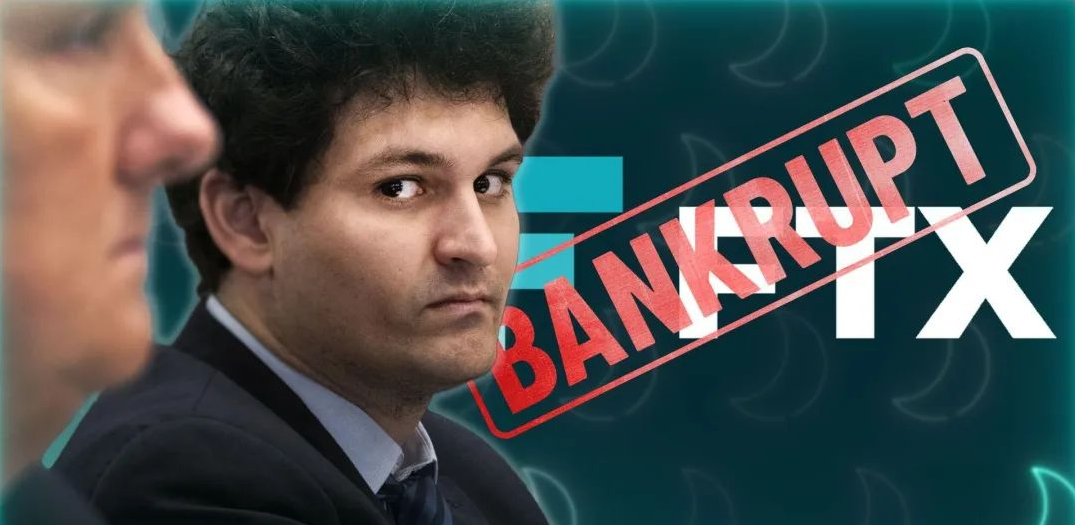Has zkSync Era risen to become the third largest Layer2 network within three months, and is it a bubble or a real ecosystem?
Has zkSync Era become the third biggest Layer2 network in three months? Is it a bubble or a real ecosystem? 
Author | [email protected]
Since its launch on the mainnet on March 24th, the zkSync Era has achieved a TVL of $627 million in just three months, accounting for 6.48% of the entire Layer2 sector, and has become the third largest Layer2 network with a weekly growth rate of nearly 20%. The number of independent addresses on zkSync Era has exceeded one million.

- Major Challenges Facing the NFT Ecosystem
- Top 10 Best Data Dashboards in June
- Mind Network: Enhancing Data Security and Privacy Protection in the Web3 Era
These data are closely related to the token incentive expectation of zkSync Era. So, what is the current ecological development situation of zkSync Era? After the token incentive expectation ends, can zkSync Era continue to maintain high heat and high TVL growth?
About zkSync Era
zkSync is an Ethereum Layer 2 Rollup blockchain, which can also be seen as a trustless protocol for providing scalable and low-cost payments on Ethereum Layer2. zkSync uses ZK Rollup technology to solve the problem of Ethereum congestion, namely scalability. zkSync is one of the ZK Rollups and one of the first applications of zero-knowledge proof technology.
The congestion and high transaction fees of the Ethereum network have made people pay more attention to the Layer2 expansion plan. On March 24th of this year, zkSync officially announced that the zkSync Era network was officially open to all users. As one of the most supported projects in the encryption field, zkSync Era has also been favored by many capital providers, raising more than $450 million from companies such as a16z and Dragonfly.
So, among many Layer 2s, how does zkSync Era develop and what are its advantages?
zkEVM
zkEVM can be understood as running EVM as a smart contract engine in ZK Rollup. Its goal is to bring the Ethereum experience completely into L2 without losing the performance advantages of Rollup.
Account Abstraction
Account Abstraction creates a new type of account, which separates “transaction verification” and “transaction execution” by allowing the account to exist as a smart contract. It makes each account become a smart contract with its own logic and seamless compatibility, giving ordinary users a security net and a smoother user experience without sacrificing their self-sovereignty.
zkPorter
zkRollup’s expansion plan needs to publish data to the Ethereum base layer to ensure data availability, but Ethereum’s block size limits the scalability of zkRollup. zkPorter can use off-chain data availability, which is not limited by the size of the Ethereum blockchain, to achieve the scalability we expect.

Overall, compared with other L2 ZK projects, zkSync is outstanding in terms of security and usability of current L2 extension solutions. Specifically, zkSync’s characteristics and advantages are reflected in zkEVM, account abstraction, zkPorter, and Layer3 Pioneer, all of which are the narrative themes of zkSync’s future.
However, the problem with ZK Rollup is that the technical implementation is much more complex than Optimism Rollup, so when Arbitrum, OP, and other Optimistic Rollup project mainnets are launched early and seize the opportunity in ecological construction, zkSync Era needs to invest real time and resources to overcome technical difficulties.
zkSync Era Ecological Environment
Ecological construction is extremely important for both public chains and Layer 2 projects. Arbitrum currently has a TVL of 5.85 billion U.S. dollars, accounting for about 60% of all Layer 2 project TVL. There are already more than 500 DApps on Arbitrum, especially GMX, which was launched in 2021 and is the native trump card project of the Arbitrum ecosystem. The rise of Arbitrum and the development of native high-quality projects are inseparable. Even after completing token distribution incentives, Arbitrum’s TVL still ranks first.
So, how is the current zkSync ecological environment? What is the development status of the project? Are there any innovative projects worth paying attention to?
After the zkSync Era mainnet went online, the TVL quickly climbed, and its popularity is no less than that of Arbitrum when it was first launched. There were nearly 200,000 independent users in the first week of the mainnet launch, and the number of independent addresses that have been online for three months has exceeded 1 million, while the locked amount has reached 627 million U.S. dollars. Since its launch in March, the ecological development of zkSync Era has also been relatively rapid. According to the current data on the zkSync official website, there are a total of 302 Dapps connected to the zkSync Era ecology, covering various fields such as DeFi, cross-chain bridges, and NFTs.

Among the 302 Dapps currently deployed on zkSync Era, there are well-known projects such as Uniswap, 1inch, and LayerZero, however, only 61 projects are currently live on Era. Moreover, it is difficult to find well-known DApps from the list of projects that have been launched. If zkSync Era wants to maintain its competitive advantage in the long run, it will still have to rely on high-quality native DApps on its chain.
Additionally, despite the rapid growth of TVL at present, SyncSwap, ranked first, accounts for 40% of the DeFi TVL on the entire chain, and the top ten DApps account for nearly 75% of the TVL, with these DApps mainly consisting of DEXs and a few lending protocols. So far, no projects with unique innovative advantages have emerged from these protocols.

Moreover, although the number of independent addresses on zkSync Era has grown very rapidly, exceeding 1 million in just three months, and the number of ETH on cross-chain bridges has also hit a new high, exceeding 530,000, from the ETH balance of each address, 60.4% of the addresses have a balance below 0.1 ETH, 29.7% of the addresses have a balance between 0.1-1 ETH, 9.5% of the addresses have a balance between 1-10 ETH, and only 0.4% have a balance over 10 ETH. From the distribution of independent address balances on zkSync Era, it is not difficult to see that the vast majority of users are just attracted by zkSync Era tokens.

Due to the lack of star projects like Uniswap and AAVE on zkSync Era, it is difficult to attract large amounts of locked funds, and the vast majority of users are here to get a piece of the pie, especially since zkSync has explicitly stated that it will release a token, which has attracted a large number of airdrop enthusiasts, resulting in an explosive growth of independent addresses.
Currently, there are only a few projects on zkSync Era that are really worth participating in, mainly DEXs and lending platforms that rank high in TVL. The most noteworthy project at present is Syncswap, the leading DEX, which currently has a lock-up volume of 68.92 million USD on the network, and the key point is that it has not yet issued tokens.
Issues with zkSync Era
As the first zkEVM project to go live on the mainnet, zkSync Era has surpassed all other mainstream Layer 2 projects in terms of the number of independent addresses, exceeding 1 million in just three months, and TVL has also experienced explosive growth. However, its problems are also very obvious:
1. The project is still in its early stages, and although many collaboration projects are listed on the official website, there are not many high-quality projects that have actually been launched. Even compared to GMX on SyncSwap and Arbitrum, there is still a long way to go, and the number of launched native projects is not large and the quality is uneven, making it difficult to accumulate TVL quickly.
2. The relatively highly ranked native projects that have been launched are mainly focused on DEXs and lending protocols. These protocols do not have any unique competitive advantages compared to existing projects on the market. For users, there are not many reasons to use them other than the attraction of token airdrops. After the expected benefits disappear or are realized, how to continue to maintain the growth of TVL is a question that needs to be considered.
3. Compared with Optimistic Rollup projects such as Arbitrum and Optimism, the technical development of ZK Rollup projects is much more difficult, especially the compatibility of DApps on zkSync Era and Ethereum mainnet, which is a major challenge. However, with the progress of zkEVM technology, this problem may gradually be solved.
The Opportunities and Future of zkSync Era
Overall, the Layer2 ZK market is still in a highly competitive stage, with StarkWare, Scroll, Polygon EVM, Aztec, and others competing in this field in addition to zkSync. Although there are technical difficulties with ZK Rollups at present, when they are widely adopted, the cryptographic ecosystem and even the entire world will make substantial progress based on this technology.
In the face of Ethereum’s trilemma, although many projects are trying to bring scalability to the chain, each solution and technology has its own unique trade-offs and use cases. zkSync Era chooses to maintain source code compatibility (Solidity and Vyper), which brings additional security advantages. When the project is deployed on L2, EVM projects do not need to make any code changes, reducing the risk of vulnerabilities and attacks.
Currently, many projects on the zkSync network are still in the early stages, with low project quality and no high APY support, making it difficult to retain user funds. In the future, zkSync needs to continue to expand its application ecosystem, encourage more project parties and developers to join zkSync, and further promote the development and application of zkSync.

Summary
As Ethereum technology continues to evolve, competition in the zkEVM space is becoming increasingly fierce. As one of the most promising and forward-looking public chains in the ZK track, zkSync Era must not let its ecosystem be drowned out by rug projects. Supporting and developing projects with backgrounds and strengths is something that zkSync Era and other new public chains need to consider.
zkSync Era has already demonstrated extremely high performance and efficiency over the past period of time, but it will take a lot of time for zkSync Era to truly prosper. As the zkSync ecosystem continues to expand, we look forward to zkSync3.0 bringing more surprises in the future.
We will continue to update Blocking; if you have any questions or suggestions, please contact us!
Was this article helpful?
93 out of 132 found this helpful
Related articles
- Summarizing the three major innovations of Uniswap V4
- Who is bullish on Azuki? Analysis of the movements of the top eight whales
- Why did Azuki’s Elementals release collide with another release?
- Chainlink Proof of Reserve (PoR): Putting Transparency at the Forefront
- What are the potential chain reactions of Prime Trust facing bankruptcy crisis?
- Bloomberg Interview with He Yi: My relationship with CZ is that of a mentor, friend, and spouse.
- Inventory of Rug Pull events in the crypto world






